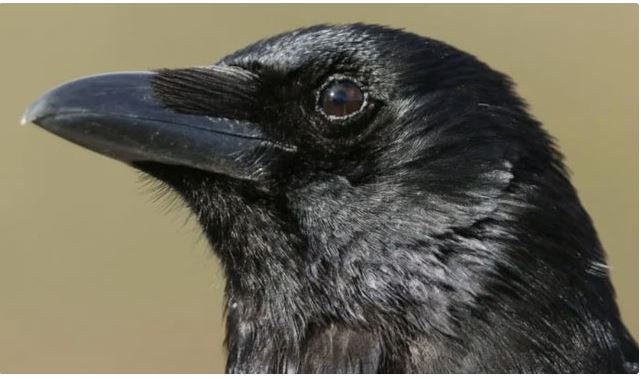The Astonishing Intelligence of Crows: Beyond Mere Instinct
Recent groundbreaking research has revealed that crows possess a level of cognitive awareness strikingly similar to that of humans. These findings challenge long-standing assumptions about animal consciousness and position crows among the most intelligent species on Earth. Unlike basic instinctual reactions, crows demonstrate primary consciousness—an awareness of their own perception of the world, which had previously been attributed only to primates.
Primary Consciousness: The Core of Subjective Experience
Primary consciousness, or perceptual awareness, refers to the ability to experience the world in the present moment. It involves processing sensory input and forming a subjective impression of reality. In humans and other primates, this phenomenon is generally associated with the cerebral cortex, a complex brain structure responsible for higher-level thought.
However, the crow’s brain architecture is vastly different. Despite lacking a layered neocortex like mammals, crows still manage to display signs of subjective experience, suggesting that consciousness can arise from alternate neurological structures. This discovery revolutionizes our understanding of how consciousness may evolve independently across different species.
Neuroscientific Evidence: How Researchers Measured Crow Awareness
In a study conducted by Andreas Nieder and his team at the University of Tübingen, two carrion crows (Corvus corone) were trained to respond to visual stimuli presented on a screen. When the crows detected a flash of light, they indicated their awareness by moving their heads. Most of the lights were clearly visible, and the crows responded reliably. However, some stimuli were intentionally subtle—short, dim flashes designed to test the limits of the crows’ perception.
Interestingly, the crows’ responses varied depending on their subjective experience. Sometimes they reported seeing the flash; other times they did not, even when the stimulus was physically the same. This fluctuation signified an internal perceptual process—evidence of conscious evaluation rather than reflex.
To reinforce their findings, researchers implanted microelectrodes in the crows’ brains to monitor neural activity during the tests. They discovered that when the crows responded “yes” to seeing a stimulus, there was a spike in neuronal activity in regions associated with high-level processing. When the response was “no,” such activity was absent.
The implication is profound: these birds were not merely reacting to stimuli, but interpreting them, a process previously thought to be exclusive to animals with cortical brains.
A Comparative Look: Bird Brains vs. Mammal Brains
Despite lacking a neocortex, the avian brain is anything but simple. In fact, recent studies using 3D polarized light imaging and neural circuit tracing have revealed that birds possess a forebrain structure functionally analogous to the mammalian cerebral cortex. Researchers like Martin Stacho from Ruhr-University Bochum discovered that the pallium—a region in the bird brain—hosts intricate networks that enable advanced cognition.
This similarity suggests that complex thought processes may not depend solely on neocortical architecture, as previously assumed. Instead, birds and mammals may have evolved cognitive capabilities independently—a phenomenon known as convergent evolution. This raises the possibility that the ability for conscious experience may be more widespread across the animal kingdom than we ever imagined.
Evolutionary Implications: A Shared Cognitive Heritage
The evolutionary divergence between birds and mammals occurred approximately 320 million years ago. Yet, both groups have developed strikingly similar mental faculties. This parallel suggests that a common ancestor may have already possessed the neurological building blocks of conscious thought.
If this hypothesis holds, consciousness might not be an anomaly limited to a few species, but a trait that emerged early in vertebrate evolution and was preserved in multiple lineages. The idea that crows, with their sleek, smooth brains, can achieve thought processes rivaling those of humans calls into question the very definition of intelligence and consciousness.
Behavioral Indicators of Cognitive Complexity in Crows
Crows have long been known for their extraordinary problem-solving abilities and social intelligence. In the wild, they have been observed:
- Using tools, such as sticks, to extract insects from crevices
- Planning ahead, such as hiding food and remembering its location
- Recognizing human faces and remembering individuals who have posed threats
- Engaging in play and demonstrating curiosity about new objects
- Mourning their dead, gathering in what appears to be ritualistic behavior
These behaviors are not reflexive—they require memory, decision-making, emotional awareness, and prediction of outcomes, all hallmarks of higher cognitive function. When paired with the neurological evidence, these behaviors provide a compelling case for crow consciousness.
Redefining Consciousness in the Animal Kingdom
Traditionally, consciousness has been considered a primate-dominant trait, largely due to the structural complexity of the neocortex. However, the discovery of subjective neural correlates in birds like crows forces a radical rethinking of this view.
If birds, despite their vastly different brain morphology, can experience subjective awareness, then consciousness must not be confined to specific anatomical configurations. This realization opens the door to new possibilities in the study of animal minds, including cephalopods, marine mammals, and potentially even insects.
Implications for Ethics and Animal Rights
As we deepen our understanding of crow cognition, we must also confront the ethical implications of recognizing consciousness in non-human species. If crows and other animals possess awareness, then they are not merely biological machines, but sentient beings with the capacity for pain, pleasure, memory, and emotion.
This recognition necessitates a shift in how we treat, study, and protect animals. It raises questions about captivity, habitat destruction, and the moral responsibilities we hold toward creatures capable of experiencing the world.
Conclusion: Crows as Sentient Thinkers
Crows are no longer just clever birds—they are self-aware, perceptive beings capable of thought processes that echo our own. The convergence of neuroscientific data, evolutionary theory, and behavioral observation paints a rich picture of avian consciousness.
As we continue to unravel the mysteries of the brain, the crow stands as a powerful symbol of nature’s hidden intelligence—an ancient mind evolved along a different path, but with startlingly human-like awareness. The question is no longer if animals like crows can think consciously, but what that means for our relationship with the rest of the living world.
